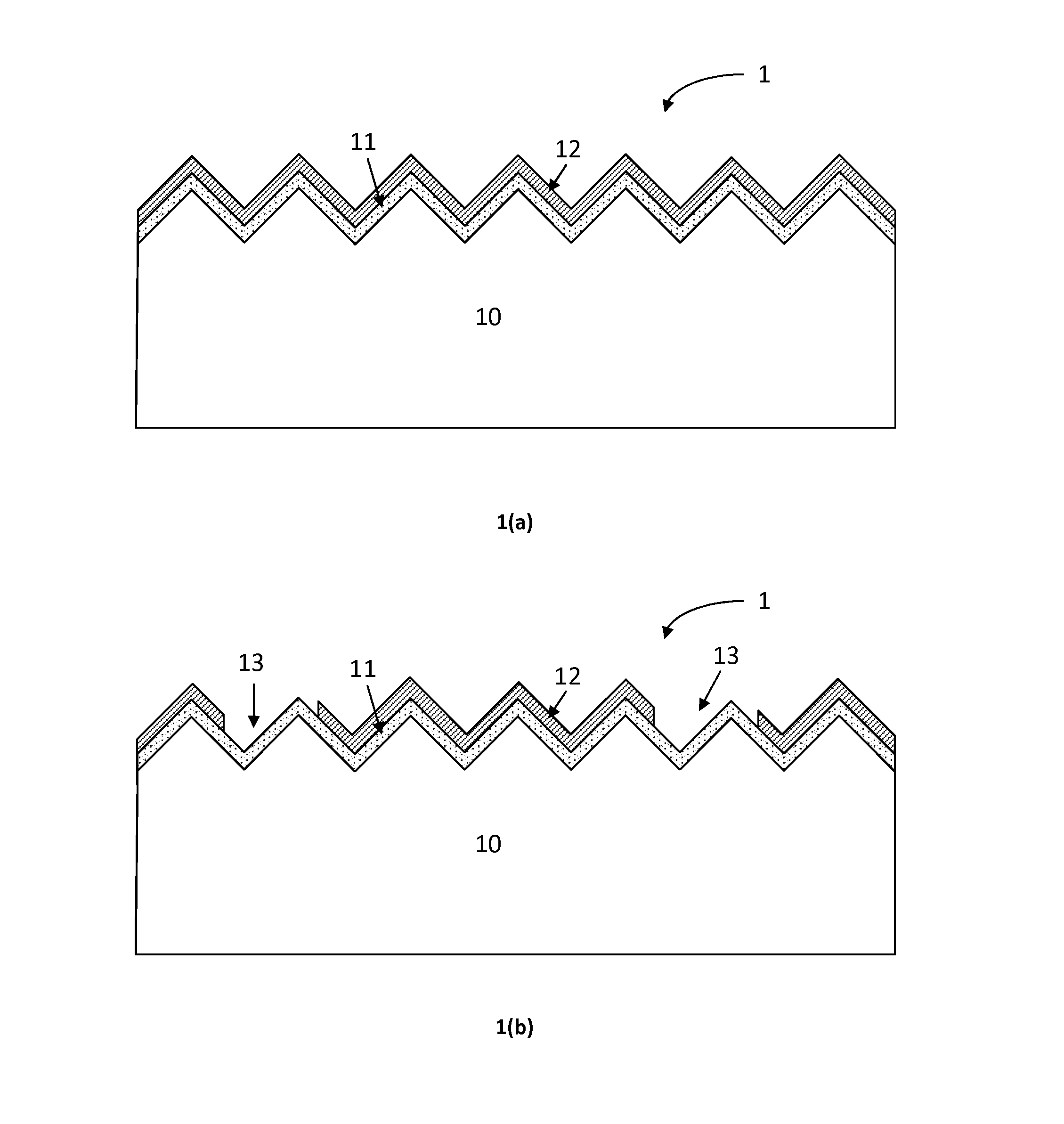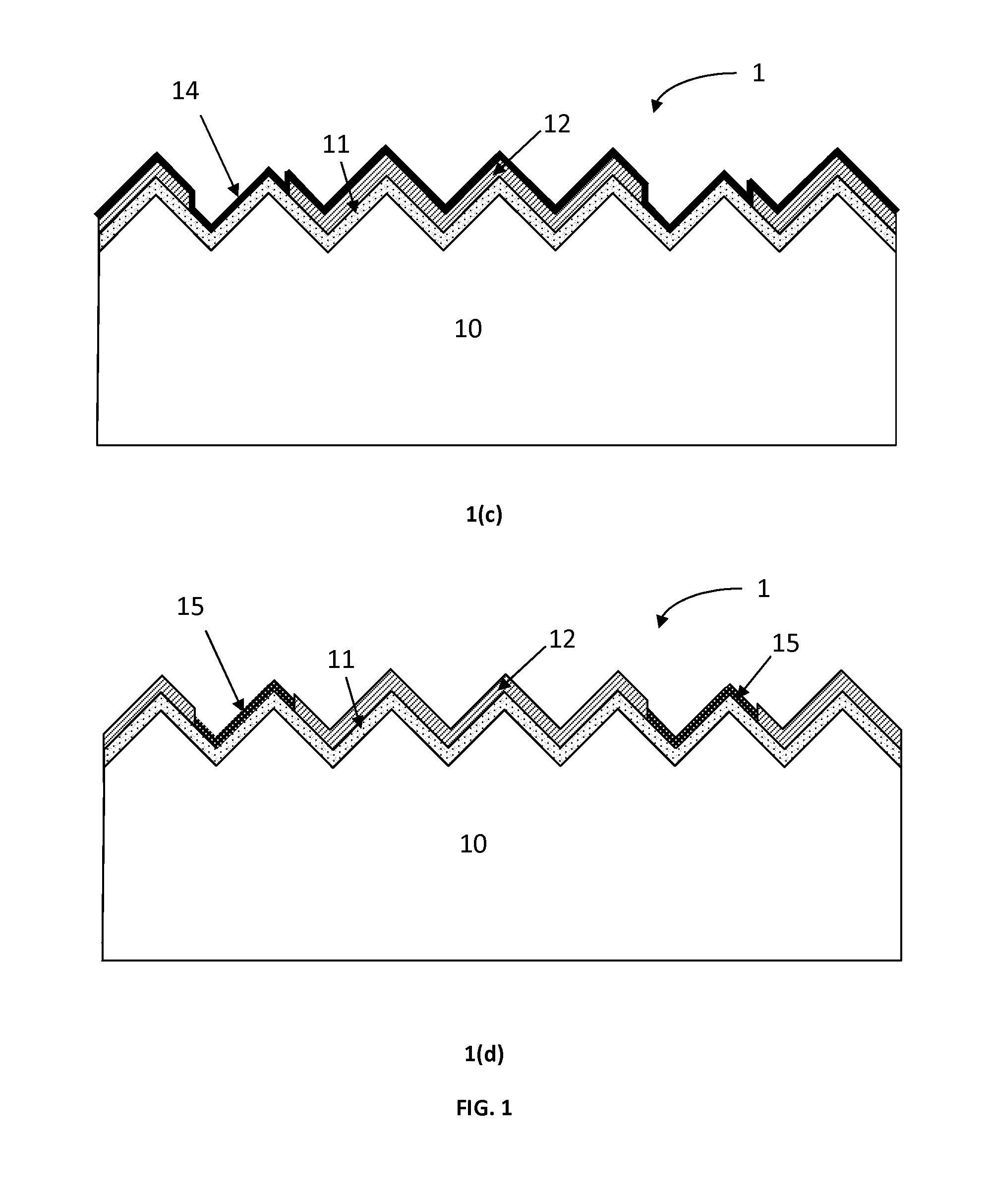Method for Forming Metal Silicide Layers
a metal silicide and layer technology, applied in the field of metal silicide layer formation, can solve the problem of increasing the risk of emitter shunting
- Summary
- Abstract
- Description
- Claims
- Application Information
AI Technical Summary
Benefits of technology
Problems solved by technology
Method used
Image
Examples
Embodiment Construction
[0030]In the context of the present description, the front surface or front side of a photovoltaic cell is the surface or side adapted for being oriented towards a light source and thus for receiving illumination. The back surface, back side, rear surface or rear side of a photovoltaic cell is the surface or side opposite to the front surface. The front side of a substrate is the side of the substrate corresponding to the front side of the photovoltaic cell to be fabricated, while the rear side or back side of the substrate corresponds to the back side of the photovoltaic cell to be fabricated.
[0031]Certain embodiments relate to a method for forming a patterned metal silicide layer on a silicon substrate, the method comprising: providing a dielectric layer on the silicon substrate; forming openings through the dielectric layer at locations where a metal silicide layer needs to be formed; providing a thin metal layer comprising the metal on the substrate, at least at the location of ...
PUM
| Property | Measurement | Unit |
|---|---|---|
| wavelength | aaaaa | aaaaa |
| size | aaaaa | aaaaa |
| thickness | aaaaa | aaaaa |
Abstract
Description
Claims
Application Information
 Login to View More
Login to View More - R&D
- Intellectual Property
- Life Sciences
- Materials
- Tech Scout
- Unparalleled Data Quality
- Higher Quality Content
- 60% Fewer Hallucinations
Browse by: Latest US Patents, China's latest patents, Technical Efficacy Thesaurus, Application Domain, Technology Topic, Popular Technical Reports.
© 2025 PatSnap. All rights reserved.Legal|Privacy policy|Modern Slavery Act Transparency Statement|Sitemap|About US| Contact US: help@patsnap.com



